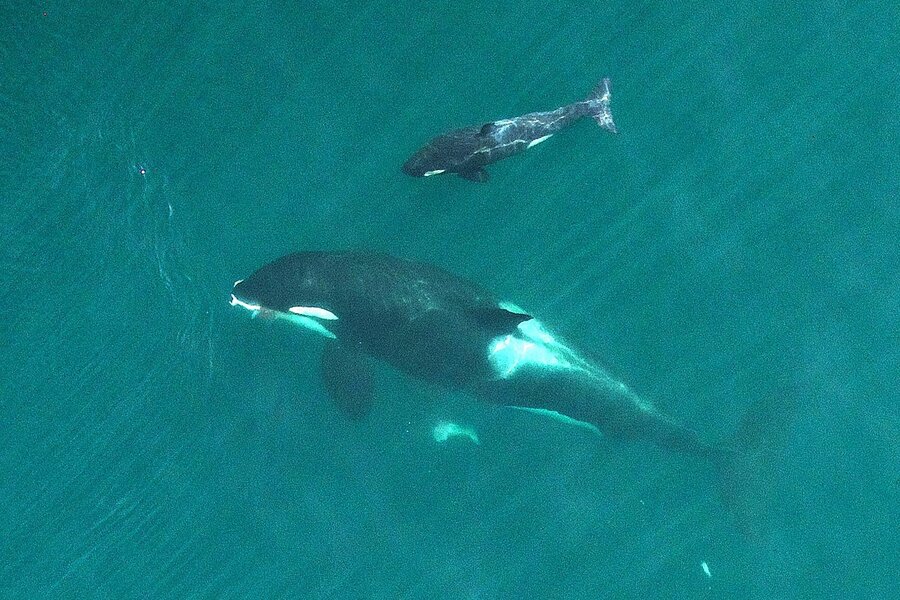Can drones help save the whales?
Loading...
Ecologists used drones to create more accurate lists of the whale and dolphin pods near Hawaii for the first time this summer.
And if drones can help save the whales, what else can they do?
Drones entered the public consciousness either as military weapons or as an obscure hobby that occasionally crash-landed on the White House lawn. The drone involvement with the National Oceanic and Atmospheric Administration's recent whale-watching expedition is a window into a growing list of nonmilitary functions for the drones, which play an increasing role in police work, real estate, or even firefighting.
Drone use in animal research and other forms of ecology is in its early stages, as researchers work with both the technology and process, improving their observational reach via drone.
"I believe that drones for conservation and research are akin to the invention of the microscope for cellular biology," said Iain Kerr, the chief executive officer of the whale and ocean research organization Ocean Alliance, during an interview with UAS Vision. Dr. Kerr uses a DJI Phantom drone to collect not only photos, but also DNA and respiratory information, from blue whales in the Sea of Cortez.
"If we truly want to understand what effects humanity is having on wildlife we need to study them in a non-invasive manner," Kerr said. "Today's drones are the ultimate realization of non-invasive research."
For Hawaii researchers, camera drones could produce better wildlife photos than photographers on boats, they told the Associated Press, because the drones do not disturb the whales. This is an important requirement for drones used in wildlife observation, as they must be engineered to avoid disturbing the animals themselves, according to engineers with the University of Florida's Unmanned Aircraft Systems Research Program.
The Hawaii research relied on a hexacopter drone, which can carry larger and higher quality cameras than more common hobby drones, according to Dronebly. The higher power level better suits them to the rough winds and seas where the NOAA researchers were operating.
Using drones enabled NOAA scientists to operate from a large, single boat during a month-long mission around Hawaii's outlying islands. Before they might have taken several smaller boats, which maneuver more easily around the marine mammals but can also be a liability in the often severe weather around the Hawaiian Islands.
The new perspective from a drone helped NOAA oceanographers catalogue the whale groups more accurately, even showing mothers with calves. Such counts are essential to gauge the health of the whale population as a whole, but locating the young whales is often a challenge because they stay beneath the surface.
They are not the only researchers to discover that drones can extend the reach of science by producing closer shots of shy animals.
One early drone encounter with whale research occurred accidentally. A group of students from Auckland’s University of Technology were using a special water-proof camera drone called a Hex H20 to study dolphins off the northern coast of New Zealand, CNN reported. Mid-way through their shoot, the students saw a rare Bryde's Whale, and they readjusted the drone to take a closer look.
"Never before have I seen anything like this," Barbara Bollard-Breen, the student research supervisor and a geospatial science professor, told The Independent. "There is no way we would see so much detail from a boat-based survey."
The drone caught the adult whale feeding a calf and dipping beneath the water from just 40 meters up, using the zoom feature to take a closer look that researchers said would have been impossible but for the drone.








